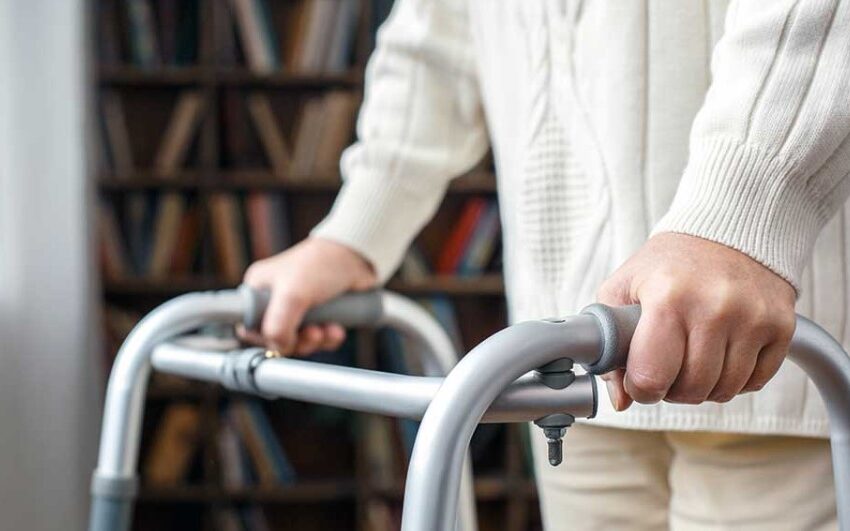Living with a disability can be challenging, but with the right mobility aids and assistive technology, individuals can lead fulfilling lives.Bedroom & seating aids can make a significant difference in the quality of life for individuals with disabilities. These aids can provide support and comfort, making it easier for individuals to perform daily activities independently.
Bedroom & seating aids include a range of products, such as bed rails, pressure relief cushions, and lift chairs. These aids can help individuals with disabilities move around their homes, maintain their hygiene, and perform daily tasks with ease.
- How to improve disabled people’s lives
Individuals with disabilities face many challenges in their daily lives. Simple tasks such as getting out of bed, using the bathroom, and performing household chores can be difficult without the right support and assistance. To improve the lives of individuals with disabilities, it is essential to provide them with the right mobility aids and assistive technology.
Mobility aids such as wheelchairs, walkers, and canes can help individuals move around their homes and outdoor spaces with ease. Assistive technology such as speech recognition software, braille displays, and smart home devices can help individuals perform various tasks independently.
Bedroom & seating aids can provide individuals with disabilities the support they need to perform daily activities with ease. These aids can improve the quality of life for individuals with disabilities by promoting their independence and reducing their reliance on others.
2. Improved Quality of Living
Bedroom & seating aids can significantly improve the quality of life for individuals with disabilities. These aids provide support and comfort, making it easier for individuals to perform daily activities independently. The following are examples of how bedroom & seating aids can be beneficial:
Lift chairs: Lift chairs can help individuals with mobility issues get up from a sitting position. These chairs provide support and lift the individual up, making it easier for them to stand up.
Bed rails: Bed rails can help individuals with mobility issues get in and out of bed safely. These rails provide support and stability, reducing the risk of falls and injuries.
Pressure relief cushions: Pressure relief cushions can help individuals who are confined to a bed or wheelchair. These cushions provide support and help to distribute the individual’s weight evenly, reducing the risk of pressure sores.
3. Assistive Technology
Assistive technology can help individuals with disabilities perform various tasks independently. The following are examples of different types of assistive technology available:
Speech recognition software: Speech recognition software can help individuals with mobility issues operate their computers and devices using their voice.
Braille displays: Braille displays can help individuals with visual impairments read and navigate their computers and devices using braille.
Smart home devices: Smart home devices can help individuals with disabilities perform various tasks around their homes, such as turning on lights, adjusting the temperature, and locking doors.
Benefits of bed comfort aids
Bed comfort aids can significantly improve the quality of life for individuals with disabilities. The following are examples of the benefits of bed comfort aids:
Pressure relief: Bed comfort aids such as pressure relief cushions can help individuals who are confined to a bed or wheelchair to distribute their weight evenly, reducing the risk of pressure sores.
Comfort: Bed comfort aids can provide support and comfort, making it easier for individuals with disabilities to get a good night’s sleep.
Safety: Bed rails can help individuals with mobility issues get in and out of bed safely, reducing the risk of falls and injuries.
Communication Aids
Communication aids can help individuals with disabilities communicate with others independently. The following are examples of different types of communication aids available:
Text-to-speech devices: Text-to-speech devices can help individuals with speech impairments communicate by converting text to spoken words.
Sign language translators: Sign language translators can help individuals who are deaf or hard of hearing communicate with others who do not know sign language.
Speech generating devices: Speech generating devices can help individuals who have difficulty speaking due to a medical condition or injury communicate with others.
Communication aids can significantly improve the quality of life for individuals with disabilities by promoting their independence and enabling them to communicate with others more effectively.
VII. Conclusion
In conclusion, bedroom & seating aids can significantly improve the quality of life for individuals with disabilities. These aids provide support and comfort, making it easier for individuals to perform daily activities independently. Assistive technology such as speech recognition software, braille displays, and smart home devices can also help individuals with disabilities perform various tasks independently.
Bed comfort aids such as pressure relief cushions and bed rails can provide support and comfort, making it easier for individuals to get a good night’s sleep and reducing the risk of falls and injuries. Communication aids such as text-to-speech devices, sign language translators, and speech generating devices can help individuals with disabilities communicate with others independently.
By providing individuals with disabilities with the right mobility aids and assistive technology, we can improve their quality of life and promote their independence. It is important to recognize the challenges that individuals with disabilities face and provide them with the support and assistance they need to live fulfilling lives.
